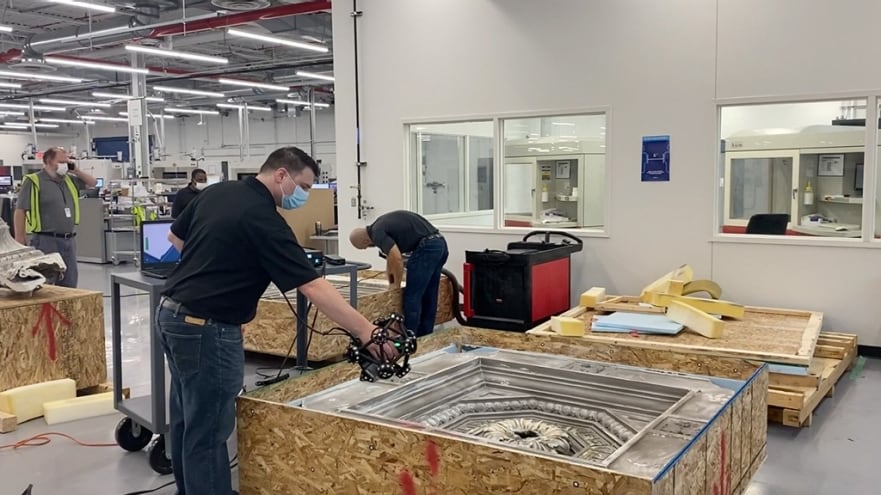3D Scanning Technology Helps Transform Michigan Central Station
October 29, 2020
DETROIT – Ford Motor Company is using innovative 3D scanning technology to re-create some of the most precious pieces of 106-year-old Michigan Central Station, as transformation of the iconic building enters a phase of heavy masonry and interior restoration work.
Laser scanners, some of which are hand-held, are being used to create 3D models of various elements of the station, allowing workers to repair or replicate large, ornate cast iron windows, decorative trim and elaborate ceiling tiles.
“Many pieces of these intricate features no longer exist and we don’t have drawings of them because they’re so old,” said Rich Bardelli, Ford’s construction manager for the Michigan Central development project. “To ensure the historical accuracy we need the right level of detail. This technology allows us to scan what’s left to get a full digital picture of what it used to look like. Then we can 3D print them in the material that would get put up; like a plastic or synthetic material or even print them as molds or casts for plaster or iron.”
Engineers from Chicago-based Computer Aided Technology (CATI), a longtime Ford supplier of 3D printing software and hardware, spent several days over the summer scanning items at Michigan Central Station and at Ford’s Advanced Manufacturing Center in Redford. CATI has now delivered more than 20 completed digital files of missing or damaged pieces. The parts will be fabricated and reconstructed by Christman Brinker, the construction manager on the project.
Ted Ryan, Ford’s archivist and heritage brand manager, says that 3D printing is becoming increasingly popular in the restoration of museums and in other projects around the world. “If we can use 3D printing to help us build cars, we can use it to help us restore the train station,” he said.
The 3D scanner uses 15 laser crosses that capture the shape of a physical object, and measures fine details, down to the thickness of a human hair, and records free-form shapes to generate digital mesh files. It makes the restoration project more precise and enables developers to take measurements that otherwise may have been impossible to obtain.
Use of 3D scanning has saved countless hours in the restoration of the train station, which began in 2018 following Ford’s purchase of the long-shuttered building. This technology has kept the project on track this year despite delays due to the COVID-19 pandemic.
The renovated train station will be the centerpiece of a new mobility innovation district in Detroit’s Corktown neighborhood, located just miles from Ford World Headquarters in Dearborn. Construction is expected to be completed in 2022.
Gary Marshall, Ford project manager, remembers visiting the station as a child to pick up his aunt who would visit from Florida. Despite the decay that took place in the years following the station’s closure in the 1980s, he said the project will restore the 640,000-square-foot building to its original splendor.
“When you dig into it, the bones are still there,” said Marshall. “We just have to get everything back into shape and bring back its luster from 1913.”


